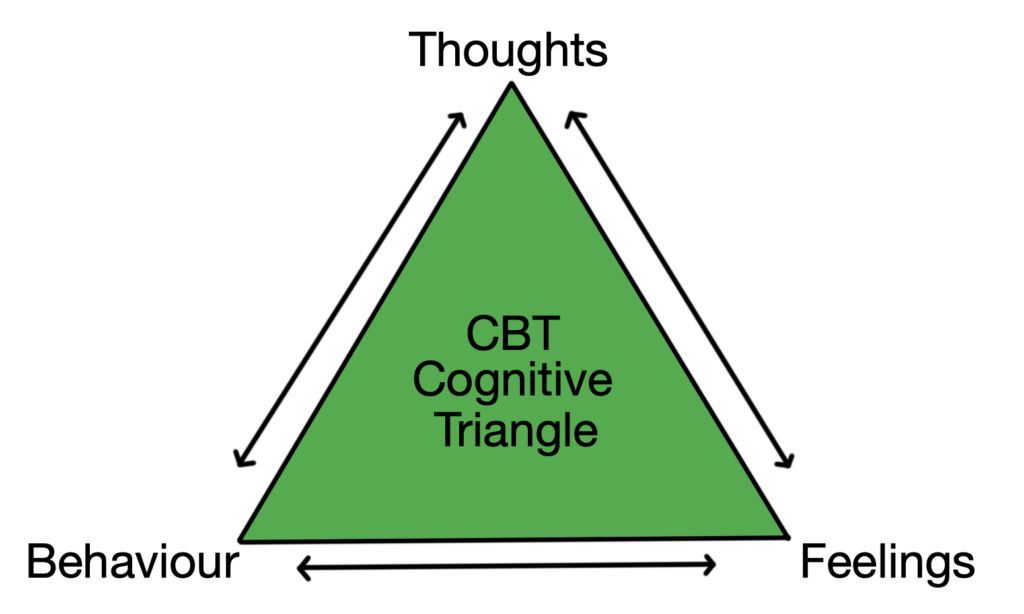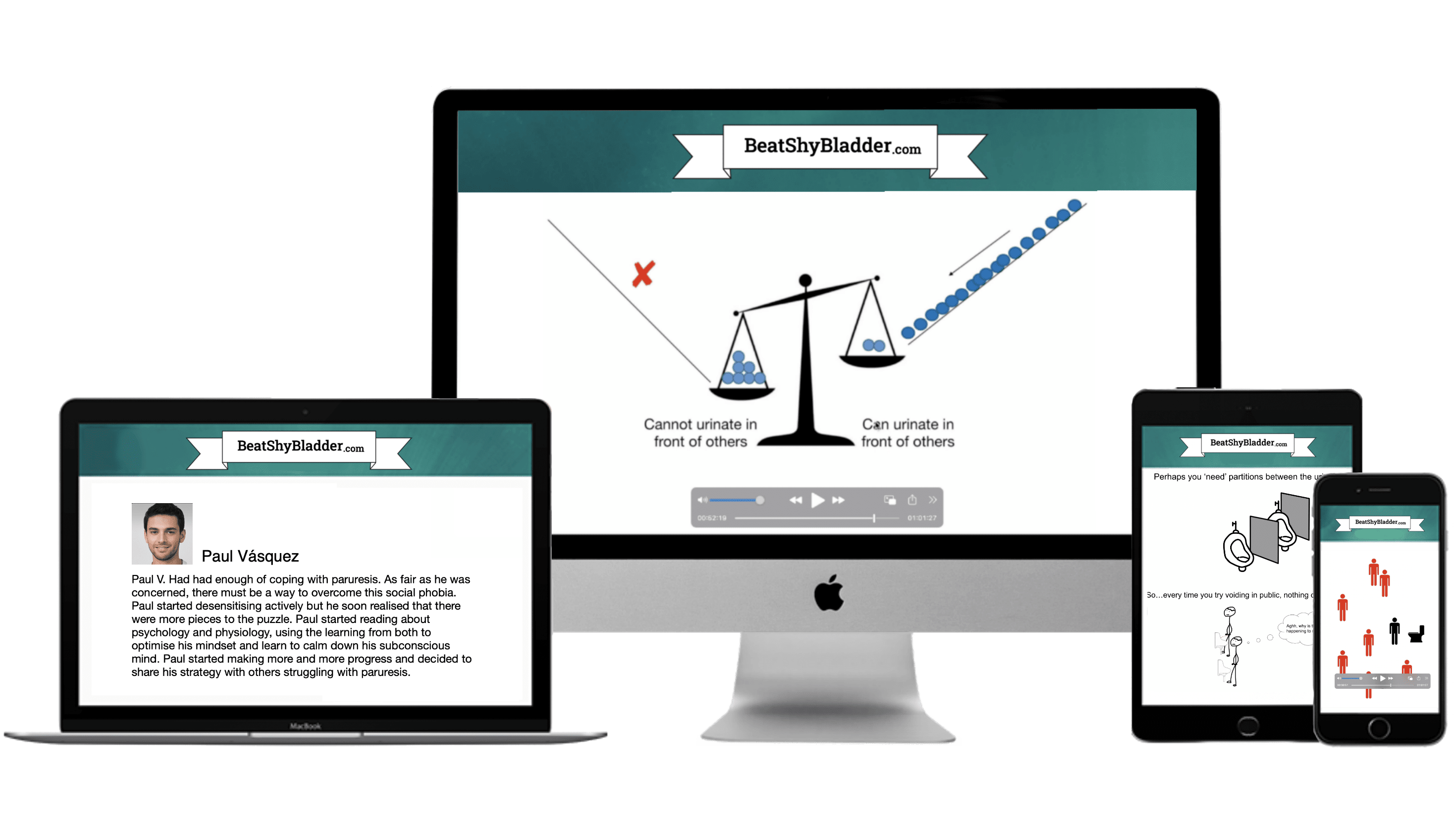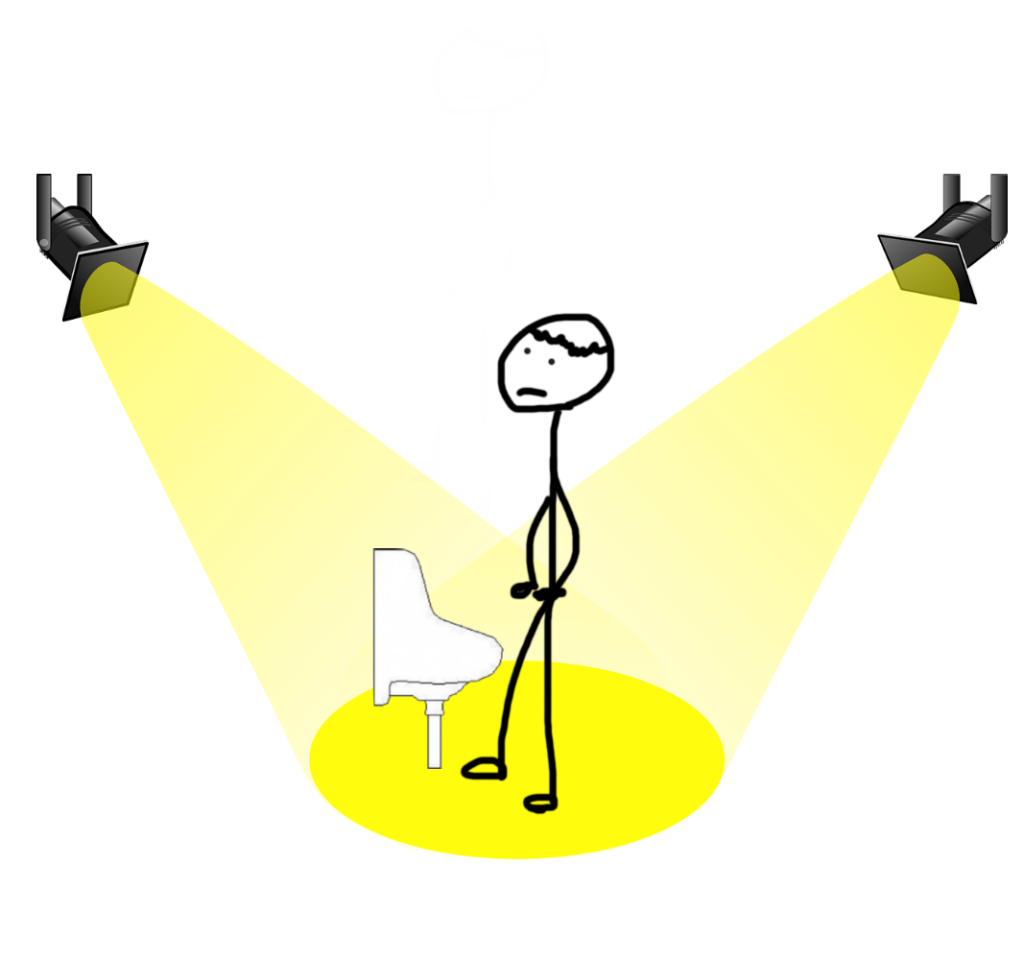
What is CBT?
A to the B to the C to the CBT (musical beat in the background).
Okay, that’s enough singing. Let’s get down to business.
Cognitive Behavioural Therapy (CBT) is a term thrown about quite a bit in the world of psychology and psychotherapy. But what actually is it?
CBT is a treatment encapsulating a range of practices aiming to get you to think, feel and act in a way that is conducive towards overcoming a specific phobia or disorder.
Whaaaaat does that even mean?
Let’s look at the CBT Triangle.
CBT Triangle
The CBT Triangle displays how thoughts, feelings and behaviours are deeply intertwined. These all influence each other. Negative thoughts can cascade into a feedback loop of negative feelings and behaviours. Fortunately, the inverse is also true. CBT practices aim to make you aware of your thoughts, feelings and behaviours that relate to, in this case, shy bladder syndrome.
Once we are aware of these, we can work on challenging the often flawed and irrational thoughts and behaviours and replace them with more constructive ones.
In a nutshell, CBT is about changing the thought patterns and the associated feelings and behaviours which may be currently perpetuating the condition rather than helping.

For instance, Andrew might believe that there is something wrong with him and that he is not capable of voiding on public. That’s his thought.
Andrew has been invited to a party. He would like to go however, feelings of shame and embarrassment arise at the thought of being unable to void in a public setting. These are his feelings.
Andrew turns down the invite and seeks out a private or ‘safe’ restroom whenever he needs to void. This is his behaviour.
This is a vicious feedback loop which reinforces shy bladder syndrome and increases the anxiety related to public restrooms.
CBT Techniques
There are a range of CBT techniques which all relate to the CBT triangle in some way. Let’s have a look at these techniques.
Psychoeducation
‘Psychoeducation? What does this even mean??’
Fear not! ‘psychoducation’ simply means learning more about what is going on behind the scenes of CBT and paruresis.
For instance, having just read about the CBT triangle is a form of psychoeducation. By learning more about the driving forces behind shy bladder syndrome and how CBT can help, you become better equipped to start making progress.
It’s kind of like turning the light switch on in a dark room. Even though shining light in a room doesn’t automatically get you to the other side, it allows you to navigate the path towards progress without so many bumps and bruises along the way.
After all, if you don’t know what the root problem is, how can you solve it? So, in order to learn more about the mechanism behind shy bladder syndrome, be sure to check out this blog post (click here).
Cognitive Restructuring
When it comes to shy bladder syndrome, many people often have thoughts about what might happen in the event of a misfire (a ‘misfire’ is when you try to void but are unable to due to paruresis).
What’s more, these thoughts are often baseless or vastly exaggerated.
‘Cognitive restructuring’ is a practice that aims to challenge these automatic assumptions which are often limiting beliefs.
Albert Ellis (renowned psychologist) said that people’s emotions often cloud their thinking and leads them to hold ‘distorted thoughts’ that don’t accurately reflect reality.1 Here are some thoughts people with paruresis may have:
- If people notice, they will call me out and say I’m weird
- I will be mocked and laughed at
- If I can’t commit to performing graduated exposure 7 times per week, what the point in trying?
- If it takes me longer than 15 seconds to get started, people will stare at me
- Etc etc.
Although there may be some truth to these thoughts, they are often unrealistically exaggerated.
People experiencing this phobia may understand that these thoughts are not logical but still experience the fear and anxiety around it. So how do we go about quieting these thoughts?
Identify the thoughts
Make a list of any thoughts you may have which steer you towards engaging in your coping mechanisms or avoidance behaviour (click here to learn about coping mechanisms). Write them down regardless of wether you think they are rational or not.
De-catastrophizing
Keep asking the question: “what will happen then?” This often helps put things into perspective. For instance:
Thought: ‘If someone notices I am standing at a urinal without voiding, they will stare at me’
Question: What then?
Answer: Well, it will make me feel self-conscious.
Question: What then?
Answer: Well, well, erm..I don’t know..I’ll just leave and get on with my day…
Test the validity of these thoughts. There is some overlap here with exposure therapy. Here’s an example:
Thought: People will start asking me questions and making rude comments if I stand at the urinal for longer than 20 seconds without voiding
Test: Wait for the need to void to develop, go to a public restroom and wait 20 seconds.
Outcome: Is the thought validated?
Socratic Questioning
Therapists sometimes ask a list of Socratic questions. Socratic questions are based on Sacrates’ (the Greek philosopher) attitude towards always questioning your beliefs. Here are some Socratic questions:
- What is the thought being questioned?
- Am I basing this on facts or feelings?
- Can I be misinterpreting the evidence?
- Am I viewing this issue in black and white? Or is there more nuance?
- Am I having this thought out of habit? Or is an external stimulus sparking this thought?
Mindfulness
‘Ohmmmmmm’, feeling relaxed yet?

Relaxation and mindfulness techniques can help keep your baseline level of anxiety under control as well as help keep the degree of sympathetic nervous system activation (fight or flight response) while attempting to void in a public setting under control.
There are literally countless studies you can find on Pubmed showcasing how good breath-work exercises and mindfulness meditation can be for easing anxiety and reducing the fight or flight response.
Exposure Therapy
Graduated exposure therapy (or graduated desensitisation) is used to treat a number of phobias and disorders like OCD, vertigo, fear of public speaking etc.
In essence, by stepping outside of your comfort zone you are able to become increasingly accustomed to utilising public restroom environments. This process requires consistency however, it can be extremely effective in reducing the automatic anxiety response to needing to void in a public setting.
For Andrew, whom we mentioned earlier, exposure therapy might mean going to the local mall after work every day to attempt voiding in a crowded restroom.
Alternatively, you could find a trusted friend to help you desensitise by having them nearby when you try to void.

As with any other practice, exposure therapy works best when done consistently. Make practicing exposure therapy a daily (or at least weekly) habit and you’ll be well on your way to making progress.
Behavioural Activation
If we think back to the CBT Triangle, we can see that there is a link between what we do and how we feel.
Now think about what activities bring joy or satisfaction to your life. It could be things like creative writing, gardening, cooking Mexican food, reading a crime fiction novel in the park, reading beatshybladder.com blog posts…okay okay, maybe not that last one.
Point is, you want to pick an activity you enjoy and schedule it into your weekly routine. This will allow you to feel better which will have a domino effect on your thoughts and actions.
A form of physical exercise is great (more energy, clearer thinking, better mood, healthier mind and body etc).
Furthermore, by taking up an activity that you can actively engage in, you are more likely to be living in the present as opposed to worrying about the future which can lead to negative feelings and actions.
Goal Setting
In clinical terms, this is called ‘Successive Approximation’. Yep, more psychotherapy jargon.
For somebody struggling with severe paruresis, the thought of successfully voiding in a urinal (for men) or sharing a cubicle with a friend (typically for women) may seem overwhelming and too good to become true.
By breaking down the long term vision into smaller, more manageable targets, we can avoid feeling overwhelmed as well as map out a path to long term progress.
Orient your mindset towards one of incremental gains. Every successive step can help get closer to a larger goal. As James Clear puts it, you want to be ‘1% better every day’. You can read more about creating habits for paruresis here.
Even setting yourself a target such as ‘attempt to void in the restroom at the mall 5 days in a row’ can be a great start. Setting yourself small goalposts like this can help keep your spirits up while moving in the right direction.
Final Thoughts
All of the techniques mentioned above relate to the CBT Triangle in some capacity.
By implementing all of the above techniques, you are able to start optimising your thought patterns, feelings and behaviours which will overtime, lead to greater confidence and indifference in public restroom environments.
Hundreds of studies have showed that when performed properly, CBT can be very effective!
As always, have a great day!
Overcome Shy Bladder Syndrome Today
Get your hands on the time tested Beat Shy Bladder Blueprint
- Self Auditing
- Protocol Reviews
- Knowledge Trove
- Feedback Loops
- Heart Rate Variability
- Visualisation
- Mindset Upgrade
- Desensitisation




